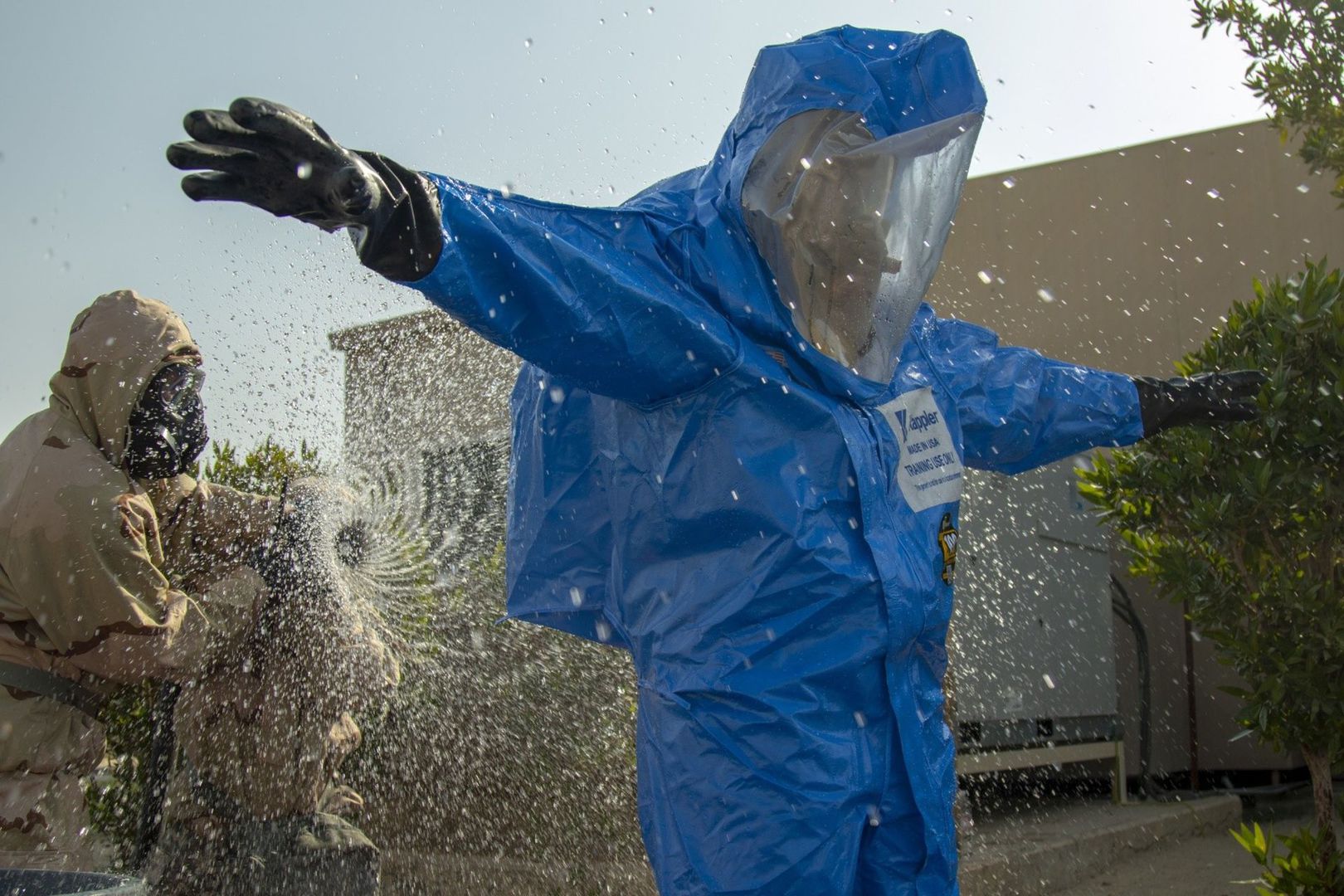CAMP ARIFJAN, Kuwait: As the sun rises over the CENTCOM area of operations, U.S. Army Reserve Soldiers receive an exercise mission brief from Christian Miles, Area Support Group – Kuwait Fire Department assistant chief of training.
“A vehicle-borne improvised explosive device carrying hazardous materials has made it to the Camp Arifjan main fire station,” says Miles. “Hurry up; we need to get the fire station cleaned up and back to full operation.”
Soldiers with the 379th Chemical, Biological, Radiological and Nuclear (CBRN) Company, led by student incident commander, Sgt. Linjess Cabrera, spring into action to make the station safe, mitigating spills and recovering victims along the way.
“Sergeant Lee, you will be in charge of entry team one,” says Cabrera to Sgt. Annie Lee, a chemical noncommissioned officer from the Chicago-based unit.
Cabrera continues to delegate mission-critical tasks including patient care, decontamination, and entry teams to his classmates.
Once all jobs are assigned, the team dispatches to the scene, rapidly beginning to assess the situation and set up the incident control point.
The incident commander then calls in the first entry team, consisting of Lee and her assigned partner, Spc. Gabby Marmolejos, and gives direction to don their Level A Hazmat suits and prepare to move into the hot zone.
After working with a member of the medical team to check that their vital signs are within safe parameters, Marmolejos and Lee don their protective equipment, a bulky suit consisting of multiple pieces including an oxygen tank, chemical protective mask, chemical-resistant over suit and boots. Cadre ensure that the students have adequately donned the equipment, keeping a watchful eye on the safety of the students.
Meanwhile, the remainder of the students work diligently to set up a decontamination site and triage area for potential casualties.
Once the medical team has completed all pre-entry checks, Cabrera confidently gives the order for the entry team to move forward, make their assessment and report back.
Using the training they received in the course along with their job-specific training, the team cautiously approaches the mock incident. With them, they carry necessary equipment for evaluating possible hazards and moving casualties.
As thick white smoke pours from the mock explosive device, the vision-obscured Soldiers locate the hazardous materials, noting the identification labels and a casualty, an approximately 150-pound mannequin. They quickly check its responsiveness, reporting their findings back to the incident commander, before loading it first onto a litter, then onto their casualty evacuation cart.
As the Soldiers prepare to evacuate the casualty, the decontamination and patient care teams make final preparations to receive the casualty and response team.
Within minutes, Sgt. Phatsara Chanthaniuon, the decontamination team leader, sees the blue-suited entry team and mock casualty push through the smoke and begins using pre-coordinated hand signals to give direction to Lee and Marmolejos.
Chanthaniuon and his partner Sgt. Kaylee Kham, begin the crucial process of removing potential contaminants from the three individuals using sanitizing kits and water spray from a fire hose.
As the decontamination team efficiently moves through their task, Cabrera gives the order for the second entry team, consisting of Sgt. Harry Smith and Sgt. Kris Rothermich, to begin mitigation of the material hazards.
Smith and Rothermich, armed with mitigation tools and personal protective equipment, move toward the hazards, utilizing calculated precision to safely remove the chemical threat before moving to be decontaminated.
The third team of Soldiers, Sgt. 1st Class Keith Gugerty and Spc. Daniel Harris, finish up the task and report back to incident command.
“Roger, good copy,” says Cabrera through his handheld radio.
After scanning the training space and receiving pleased acknowledgment from the course instructor, Cabrera gives the command “ENDEX,” a term indicating the end of an exercise cueing Soldiers to come together for further instructions.
With tired smiles, the platoon moves indoors to discuss the training, led by Miles and Cabrera.
“As a company, we work diligently to improve our readiness, should the need for our support be requested,” says Cabrera. “I think today’s training did exactly that; we know what we did well, and we know the things that we need to work on.”
Miles concludes the training with an after-action report, complementing the team’s ability to communicate through stressful circumstances.
“It is very easy to get frustrated out there,” says Miles. “But you all spoke clearly through the radios throughout the training.”
As the report concludes and the newly certified Soldiers of the 379th begin to break through the classroom doors into the mid-day sun, they take a step forward in their military careers, ready to defend against enemies both foreign and domestic.










